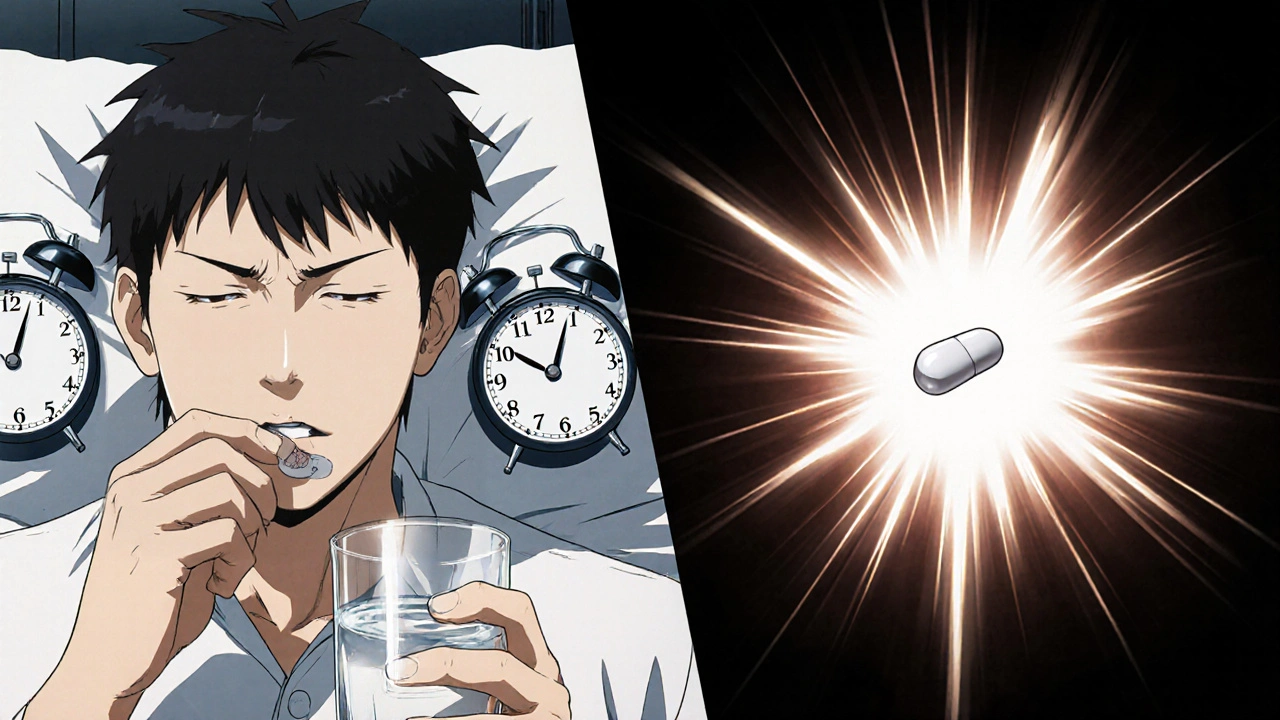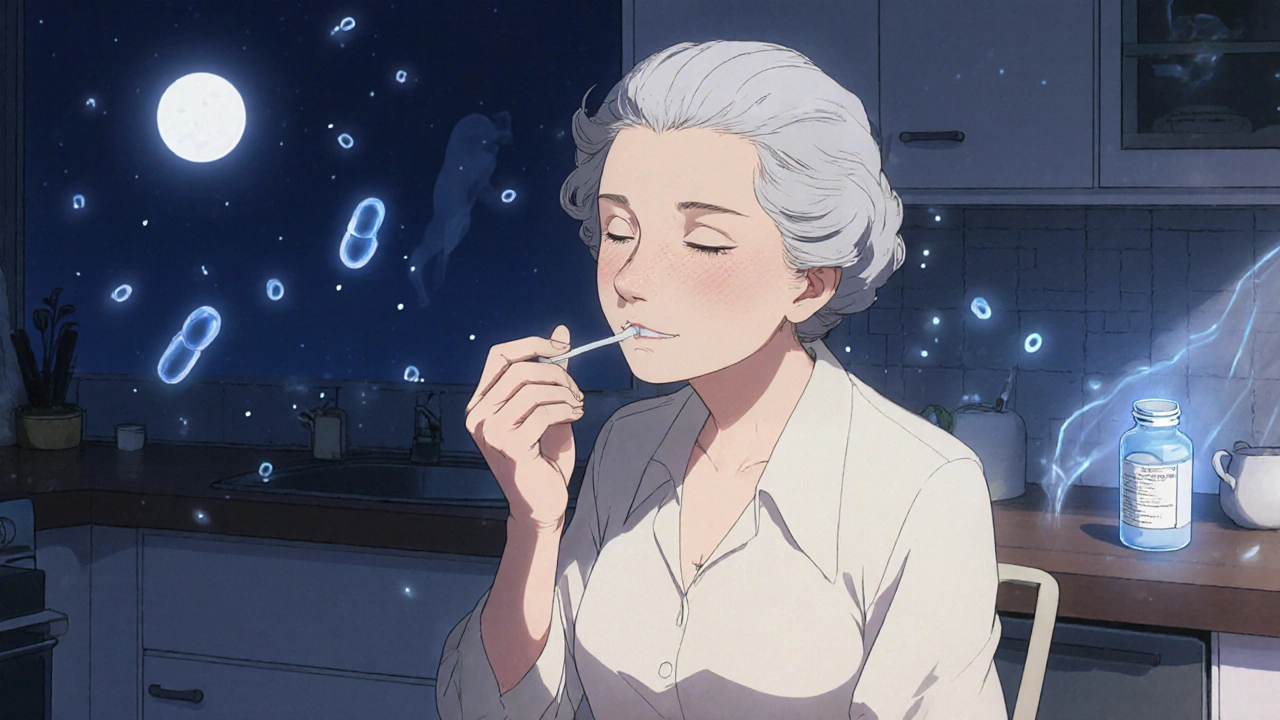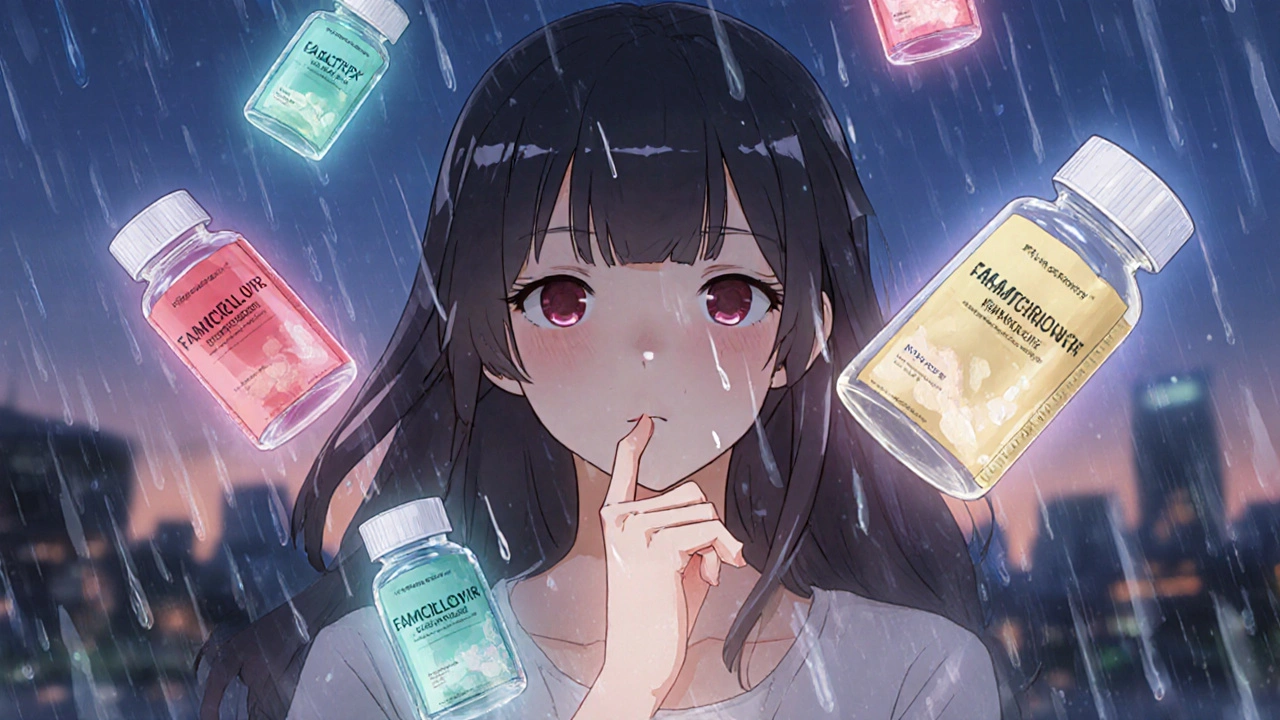Cold Sore Treatment Cost Calculator
Calculate Your Treatment Costs
Compare the real-world cost, dosing frequency, and convenience of different cold sore treatments based on your situation.
When you feel that familiar tingling on your lip, you know what’s coming. Cold sores don’t just hurt-they make you feel exposed, embarrassed, and stuck. Valtrex (valacyclovir) is often the first name doctors suggest. But is it really the best option? And are there cheaper, just-as-effective alternatives out there?
What Valtrex Actually Does
Valtrex is the brand name for valacyclovir, a prodrug that turns into acyclovir in your body. It works by blocking the herpes virus from copying itself. That means less spreading, faster healing, and fewer outbreaks. For most people, taking Valtrex at the first sign of a cold sore cuts healing time from 10 days down to 4-5. If you get frequent outbreaks (more than 6 a year), daily use can reduce them by up to 80%.
It’s approved for three things: treating initial genital herpes, managing recurrent outbreaks, and reducing transmission to partners. It’s also used for shingles and cold sores. The standard dose for cold sores is 2,000 mg taken twice, 12 hours apart. For genital herpes, it’s usually 1,000 mg twice daily for 7-10 days.
Why People Look for Alternatives
Valtrex isn’t perfect. It costs $10-$20 per pill in Australia without a subsidy. That adds up fast if you’re taking it regularly. Some people get headaches or nausea. Others just want something cheaper or more accessible.
There are three main alternatives: acyclovir, famciclovir, and topical creams. Each has trade-offs in cost, dosing, and effectiveness. Let’s break them down.
Acyclovir: The Original, But Harder to Take
Acyclovir is the older version of valacyclovir. It’s been around since the 1980s and is the active ingredient Valtrex turns into. So why not just take acyclovir directly?
Because you have to take it way more often. To match Valtrex’s effect, you need to take acyclovir five times a day-every 4 hours while awake-for 5-10 days. That’s a nightmare for busy people. You’re setting phone alarms, skipping work meetings, or waking up in the middle of the night.
It’s also less absorbed by the body. You need about 3-4 times the dose of acyclovir to get the same blood levels as Valtrex. For cold sores, that’s 200 mg five times daily. For genital herpes, it’s 400 mg three times daily.
But here’s the upside: acyclovir is generic, cheap, and widely available. In Australia, a 200 mg tablet costs less than $0.50 each with a PBS subsidy. That makes it the most budget-friendly option if you can handle the dosing.
Famciclovir: The Middle Ground
Famciclovir (brand name Famvir) is another oral antiviral. It converts to penciclovir in your body. Like Valtrex, it’s taken fewer times per day-usually twice daily for cold sores or genital herpes.
For cold sores, you take 1,500 mg as a single dose. That’s it. One pill. No second dose needed. That’s easier than Valtrex’s two-pill regimen. For genital herpes, it’s 250 mg three times daily for 5 days.
Studies show famciclovir works just as well as Valtrex for healing time and outbreak reduction. One 2018 trial found no significant difference in symptom relief between the two. But famciclovir isn’t as widely prescribed in Australia. You’ll need a script, and it’s not always on the PBS. That means out-of-pocket costs can hit $15-$25 per tablet.
It’s also gentler on the stomach for some people. If Valtrex gives you nausea, famciclovir might be a better fit.

Topical Options: Creams and Ointments
There are creams you can slap on-acyclovir cream, penciclovir cream (Denavir), and docosanol (Abreva). These are OTC in Australia, so no prescription needed.
But here’s the truth: they’re not as effective as oral meds. Topical antivirals only work on the surface. They don’t reach the nerve roots where the virus hides. That means they won’t shorten outbreaks as much or reduce transmission.
Abreva (docosanol) is the most popular OTC option. It claims to heal cold sores 1-2 days faster if used at the first tingle. Real-world results? Maybe half a day. And it costs $20-$30 per tube. That’s more expensive than a single acyclovir tablet.
Topical treatments are best for people who refuse pills, have kidney issues, or just want something mild. They won’t stop outbreaks from coming back.
Which One Should You Choose?
There’s no single “best” drug. It depends on your situation.
- Best for speed and ease: Valtrex (2,000 mg twice a day) or famciclovir (1,500 mg single dose). Both cut healing time dramatically.
- Best for budget: Acyclovir. You’ll take more pills, but you’ll save hundreds per year.
- Best for sensitive stomach: Famciclovir. Fewer GI side effects reported.
- Best for no prescription: Abreva. But don’t expect miracles.
For people with frequent outbreaks (5+ per year), daily suppression is the smart move. Valtrex 500 mg once daily is the most studied option. Famciclovir 250 mg twice daily works too. Acyclovir 400 mg twice daily is cheaper but harder to stick with.
One thing to remember: all these drugs work best when taken at the first sign-tingling, itching, redness. Waiting until the blister pops means you’ve already missed the window.
What About Natural Remedies?
Lysine supplements, lemon balm, zinc oxide, and tea tree oil get a lot of hype. Some small studies suggest lysine might reduce outbreak frequency. But the evidence is weak. A 2021 review in the Journal of Clinical and Aesthetic Dermatology found no strong proof that lysine works better than placebo.
Topical zinc oxide can help dry out sores and reduce redness. It’s safe and cheap. But it doesn’t touch the virus inside your nerves. Same with tea tree oil-it might soothe, but it won’t prevent spread.
If you’re using natural remedies, treat them as comfort aids, not replacements. Don’t skip your antiviral because you’re sipping lysine tea.

When to See a Doctor
You don’t always need a script for cold sores. But if you have:
- Outbreaks more than 6 times a year
- Sores that last longer than 2 weeks
- Herpes near your eyes
- A weakened immune system (from HIV, chemo, or steroids)
- Severe pain or swelling
Then see a GP or dermatologist. You might need a stronger dose, a different drug, or tests to rule out something else.
Also, if you’re pregnant or breastfeeding, don’t start any antiviral without medical advice. Valtrex is considered low-risk, but it’s not automatic.
Real-Life Scenarios
Case 1: Sarah, 28, gets cold sores 3-4 times a year. She uses Valtrex when she feels the tingle. Pays $15 out-of-pocket. Healing time drops from 8 days to 5. She’s happy.
Case 2: Mark, 45, has genital herpes. He gets outbreaks every 2 months. He tried Valtrex but found the cost too high. Switched to acyclovir 400 mg twice daily. Takes 6 pills a day. Takes a while to adjust. But now he spends $30 a month instead of $120.
Case 3: Lena, 62, has kidney problems. Her doctor switched her from Valtrex to famciclovir because it’s easier on her kidneys and she can take fewer doses. She doesn’t get sick from it.
Final Thoughts
Valtrex is effective. But it’s not the only option. Acyclovir is the quiet hero-cheap, proven, and reliable if you can handle the dosing. Famciclovir offers a middle ground: fewer pills, similar results, but higher cost. Topical creams? They’re nice to have, but don’t count on them.
The best choice isn’t the most expensive one. It’s the one you’ll actually take. If you forget pills, go for famciclovir’s single-dose option. If money’s tight, acyclovir wins. If you want the fastest relief and don’t mind paying, Valtrex still leads.
And always start early. The moment you feel that itch-take the pill. Don’t wait for the blister. That’s when the virus is most vulnerable.
Is Valtrex better than acyclovir for cold sores?
Valtrex (valacyclovir) works faster and requires fewer doses than acyclovir because it’s better absorbed by the body. For cold sores, Valtrex is taken as two 1,000 mg pills 12 hours apart. Acyclovir needs five doses a day. Both heal sores in about the same time, but Valtrex is easier to stick with.
Can I buy Valtrex over the counter in Australia?
No. Valtrex is a prescription-only medicine in Australia. You need a script from a GP or dermatologist. Acyclovir and famciclovir also require prescriptions. Only topical options like Abreva are available over the counter.
Is famciclovir as good as Valtrex?
Yes. Clinical trials show famciclovir and Valtrex are equally effective for treating cold sores and genital herpes. Famciclovir can be taken as a single 1,500 mg dose for cold sores, which is simpler than Valtrex’s two-dose regimen. But it’s often more expensive and less commonly prescribed.
Does acyclovir work as well as Valtrex for suppressing outbreaks?
Yes, but you have to take it more often. For suppression, Valtrex is usually 500 mg once daily. Acyclovir requires 400 mg twice daily. Both reduce outbreak frequency by 70-80%. If you can remember to take pills twice a day, acyclovir is far cheaper and just as effective.
Are natural remedies like lysine effective?
There’s no strong scientific proof that lysine or other natural remedies prevent or treat herpes outbreaks. Some people report benefits, but controlled studies show no significant difference compared to placebo. They’re safe to try as a supplement, but don’t rely on them instead of antiviral medication.
What’s the cheapest way to treat cold sores in Australia?
The cheapest option is generic acyclovir with a PBS subsidy. A 200 mg tablet costs under $0.50. You’ll need to take five doses a day, but the total monthly cost for suppression is under $30. That’s less than a third of what Valtrex costs out-of-pocket.
Can I switch from Valtrex to another antiviral?
Yes, you can switch between valacyclovir, famciclovir, and acyclovir under medical supervision. Your doctor will adjust the dose based on the drug’s bioavailability. Never switch on your own-dosing is different for each drug, and mistakes can reduce effectiveness or increase side effects.
If you’re managing herpes regularly, talk to your doctor about your options. There’s no shame in wanting something cheaper, easier, or gentler. The goal isn’t to find the most famous drug-it’s to find the one that fits your life.

